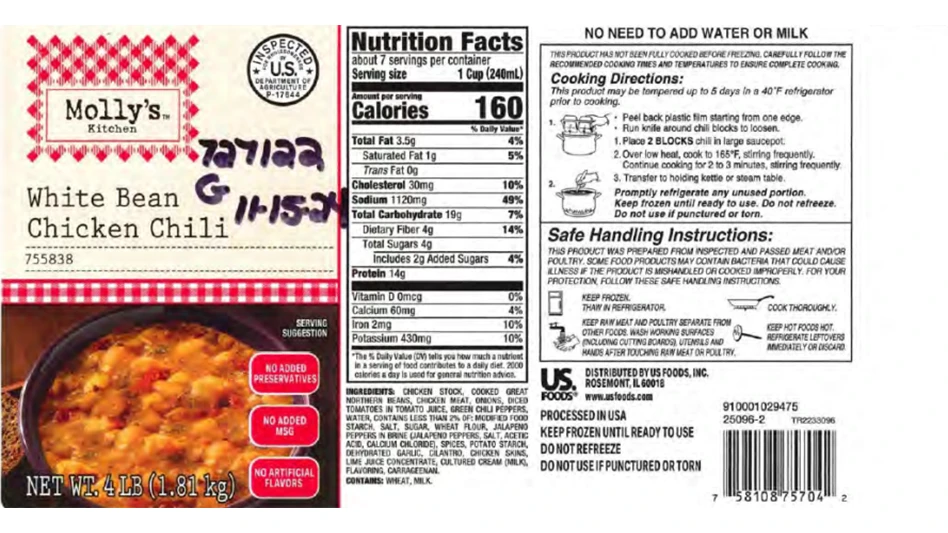 JENNIFER McENTIRE, United Fresh Produce Association
JENNIFER McENTIRE, United Fresh Produce AssociationBefore I joined a produce industry association, I’d hear colleagues who worked with fresh produce talk about how “fresh produce is different.” “Sure,” I thought to myself. Everyone wants to think their sector is somehow different, special, and deserving of additional research, regulatory guidance, etc. But now, nearly two years into the weeds of produce, I see what they are talking about. Produce really is different, in more ways than I could have imagined:
1. No kill step.
While produce isn’t the only food category that lacks a kill step, it is probably the most highly consumed food group without the benefit of thermal processing. There is no retorting, baking, or blanching available to fresh produce (although the industry is still on the lookout for technologies that retain the “fresh” characteristics of the food while building in an extra layer of food safety). This means that contamination at any point in the process could persist to the final consumer. Extreme care is taken from the very beginning. Or more accurately, even before the very beginning, including control of compost, water, and seeds, and evaluations of the surrounding area to limit opportunities for contamination.
2. Not formulated.
Other than perhaps applying wax, there is no formulation or manipulation of fresh produce. While breeding has been done to improve quality attributes, I don’t know of any breeders who can decrease the water activity of lettuce to below 0.86. The industry is actively investigating the efficacy of different washes and treatments as an additional hurdle, but as of yet we are not able to formulate fresh produce.
3. Not branded.
Increasingly, some produce companies are making a name for themselves, with bagged salads, berries, and some citrus items developing brands that consumers recognize. But much fresh produce is still sold in bulk form. Traceability can be challenged when products are commingled and indistinguishable from each other. It also affects consumers’ perception of product safety when a commodity is implicated in an outbreak.
4. Not consolidated.
The size of the largest fresh produce companies pales in comparison to multi-national processed food brands. And yet the number of member companies at some “large” trade associations pales in comparison to the number of members at United Fresh. Calling it “the produce industry” is a misnomer. Produce represents a fragmented diversity of items that may have very little in common with each other. Equipment, skills, knowledge, and research are not necessarily applicable across different commodities.
5. Comparatively less research.
Developing and producing a processed food requires a lot of science, by definition. Very few people can make an extruded breakfast cereal from scratch in their kitchen. In contrast, many homeowners have vegetable gardens. Although fresh produce is now recognized as a potential vehicle for microbial pathogens, the spotlight has really been on fresh produce for only about the last decade. Prior to this, emphasis was placed on dairy products, meat and poultry, and eggs. Fundamental research on produce safety has therefore lagged behind, and some researchers may want to pursue more sophisticated research rather than filling some basic knowledge gaps that exist in the produce realm. The Center for Produce Safety was established by the industry a decade ago and has provided more than $20 million to support more than 125 research projects to accelerate our understanding — and develop solutions — to produce safety challenges.
6. Comparatively fewer technical experts.
Because of the tremendous number of companies, each of which has unique food safety needs, there just aren’t enough produce safety experts to go around. Several colleagues from other parts of the food system have recently brought their technical expertise to the produce industry — and have probably been as surprised as I am at how these skills translate. I believe the produce industry is in the midst of an exciting era where we’ll be able to leverage the knowledge gained in other sectors and apply it to an industry with unique needs. While I always try to encourage young people to pursue an interest in food safety, I think the greatest opportunities, right now, lie in the produce industry.
Does all this mean that produce is in worse shape than other food commodities? No. What it means is that the fresh produce industry has a heightened awareness of the vulnerabilities of the items it produces — items that are widely recognized as having tremendous health benefits, and one of the only food categories for which you don’t need the preface “consume in moderation.”
Those in the produce industry aren’t complacent about food safety; they can’t cook away any microbiological concerns or extract out any undesirable substances. The safety of fresh produce doesn’t hinge on one critical control point; it relies on a continuum of protection.

Explore the June 2018 Issue
Check out more from this issue and find your next story to read.
Latest from Quality Assurance & Food Safety
- Boston Sword & Tuna Protects Seafood Safety with Mettler-Toledo Metal Detectors
- IFT Releases New Resources to Aid Food and Beverage Industry in Sugar Reduction
- Yum! Brands CEO David Gibbs to Retire in 2026
- Penn State Extension Offers Short Course on Food Microbiology and Safety for Food Plant Workers
- Johnsonville Recalls Cheddar Bratwurst Due to Possible Plastic Contamination
- Cabot Creamery Butter Recalled Due to Possible Fecal Contamination
- USDA Delays Salmonella Testing Program for Breaded Stuffed Chicken
- FDA Extends Comment Period on Poppy Seeds to June 16





